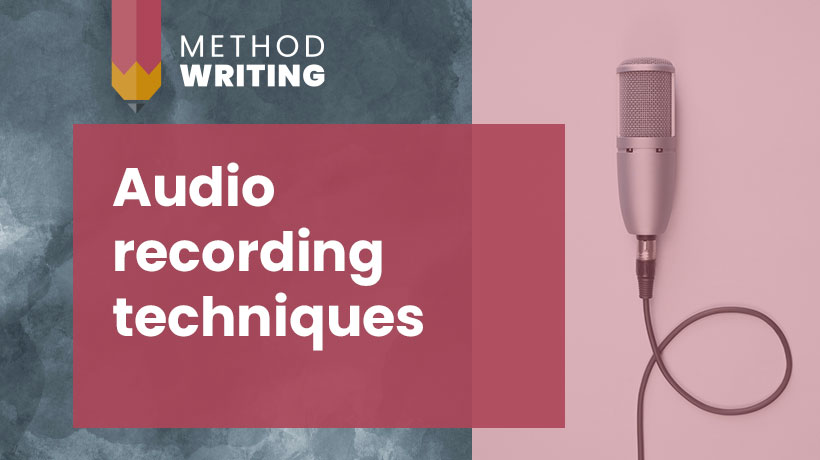Recording your own audiobook – tech essentials for authors
If you’re an author who wants to record your own audiobook, it’s easy to get overwhelmed. There’s so much advice out there, some of it highly technical. Do you need it? Or do you just get a decent microphone and off you go?
Well, I have a radio background, and failed twice to get into ACX. (I eventually succeeded – see what I learned from those audiobook recording fails). Meanwhile, here are the basics.
Choose a quiet space and give it acoustic treatment
When it comes to recording your own audiobook, it’s not enough to have a quiet room. It needs to be as silent as possible. Microphones pick up everything, and audio is nearly impossible to fix in post-production. If you’re a podcaster already, you’re half-way there, but note that podcasting sound quality is pretty forgiving. Audiobooks are a closer, more intimate form of listening, and ACX audio quality is high. So you need that quiet space.
There are two main strategies for acoustically treating your space for audio recording:
a. Set up a home studio space or booth
Choose a small, quiet space and give it acoustic treatment to absorb the echo. Free options include quilts and egg cartons. Low-cost options include foam panels and desktop sound shields. I use a mix – sound shield, foam panels and a clothes drier hung with a quilt, a rug to dampen the table. Advantage: it’s cheap and relatively comfortable.
b. Create the space around you
Use quilts to create a makeshift tent as an acoustically ‘dead’ space. Or sit inside a cupboard or wardrobe stuffed with clothes or quilts. This will be quicker than setting up a desk space for short recording sessions.
If you enjoy a challenge, the DIY home studio approach will be fun and rewarding. But audiobook recording takes hours, and it may not be worth the investment for you.
If you prefer to cut to the chase, consider hiring a local recording studio. If you and your script are well prepared, this may be cost-effective. How to prepare your book for audiobook recording.
What to look out for: Think long-term. If you’re planning to record a lot of audiobooks, it may be worth the effort of a dedicated space. If it’s just one or two books, or an experiment to test the market, hiring a studio will save you hours of time.
A high quality microphone
Your phone, laptop microphone or headset mic aren’t good enough for audiobook recording. You need clean, high quality audio that picks up as much of your voice and as little of the room tone as possible (signal-to-noise ratio), without popping and heavy breathing. Quality microphones are highly individual and there are many different kinds with all sorts of technical differences and uses. Go for a podcasting or voiceover style of microphone. See the ACX microphone recommendations for suggestions at different price points.
What to look out for: The main microphone styles are dynamic and condensers. Dynamic microphones are versatile workhorses. Condenser microphones are more sensitive and nuanced. Some people love condensers for close work, but they can also be unforgiving – think high-definition video!
An audio interface to send the sound to your computer
To power the microphone sound and get it into your computer, you need an audio interface. Unless you have an amazing desktop sound card with the right inputs, you’ll probably want to buy an inexpensive audio interface with a preamp function. A preamp boosts the microphone signal to a decent level. Without this boost, you can’t amplify your sound recording without also amplifying unwanted hiss and hum.
I use a Focusrite Clarett+ 2Pre audio interface which has two inputs and is therefore useful for studio interviews.
What to look out for: Choose an audio interface with enough inputs for your needs. Do you aim to do two-way interviews, or plug in your keyboard or guitar?
Audio editing software
The free voice recording software on your computer doesn’t do all the recording, editing and mastering (post-production) jobs you need to do. You need something with more sophisticated functions.
Audacity is free and powerful. Adobe Audition comes with Adobe Creative Cloud. If you’re already the Adobe suite for book layout (InDesign) or video editing (Premiere), you may have Audition already as part of your Creative Cloud subscription.
Both Audacity and Audition now have a ‘punch and roll’ function, which is fantastic for long-form recording such as audio book narration.
What to look out for: Audio software and audio processing are memory-hungry. If you have an old computer, it may be time to upgrade.
Is your book ready for audio recording? Check out these tips on audio attunement.
